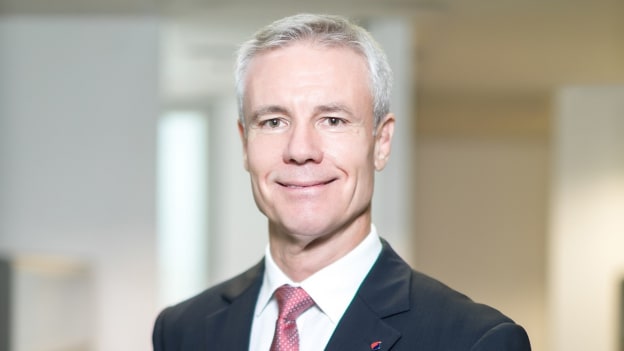Plan strategically for the new norm: MSIG Singapore's Craig Ellis

Singapore is halfway through its circuit breaker lockdown period, and more businesses are starting to look at the long-term situation. People Matters asked Craig Ellis, the CEO of MSIG Singapore and a long-time veteran of the insurance industry in the APAC region, for his thoughts on the pandemic's impact on the industry and businesses going forward. Here are the highlights of the conversation.
How are you seeing the insurance landscape changing, now that there are heightened concerns over healthcare and medical costs?
In the wake of COVID-19, the increased demand for healthcare resources will likely exert more price pressure. This along with rising awareness of health risks, will see a shift of consumer priorities towards healthcare spending and similarly, their insurance coverage. COVID-19 has also enacted new developments in medical care such as the rising dependence on telemedicine. In anticipation of such trends,we are placing greater emphasis on our healthcare product and service innovation.
What's the impact on your own business?
Like all businesses, we have been affected by the economic fallout from the pandemic, with insurance demand falling across most product segments. Fortunately, over the years, we have built a steady base of clientele and diversified our business sufficiently to adjust and manage our risks.
Consumer sentiments may be low in the near term but there will always be a need for risk protection to cover events like fire, motor and personal accidents.
However, the pandemic has been a litmus test on many fronts as we strive to juggle multiple business priorities—keeping our employees safe and healthy, while maintaining a long-term view on our business strategy. It has been challenging for us to continue to do things the way they are used to. We have lost some of our operational capacity for instance, as we had to temporarily close our customer service centre and some hotlines. We had to also ramp up our technological capabilities within a very short time for large-scale work from home.
How have the WFH arrangements been going so far?
Coincidentally, we were in the midst of piloting a Flexible Work Arrangement programme before the outbreak happened. The ease of transition has not been altogether smooth due to the presence of some manual work processes across operations, most of which could not be changed overnight. Although we were able to progressively move our workforce to home-based, there is still an ongoing challenge of enabling home access to certain key data systems.
However, the pandemic has accelerated the onboarding and staff’s buy-in to remote working and I think we have reacted quickly in enabling the necessary infrastructure for our employees to work from home. We were able to increase the percentage of our home-based workforce from the initial 30 percent before the Circuit Breaker measures to nearly 90 percent within the following two weeks. While it has been undoubtedly more challenging to maintain the same levels of service and operations with fewer staff onsite, the teams have been managing within the constraints.
Do you see the present practices carrying on into the post-crisis recovery period?
Even in the post-outbreak era, I believe that it will remain challenging for companies to have their entire workforce physically return to work or revert to the previous ways of working until the coronavirus can be brought under complete control.
Businesses will need to view these challenges strategically and take proactive changes to preserve their operational continuity in the long-term. These could range from putting in place new work practices, more employee support programs, having a flexible performance plan and incorporating digital training to upskill their workforce.
The response to this crisis is likely to also accelerate more digital adoption and propel demand for out-of-the-box capabilities that can provide automated services to customers. The rising use of new technologies will have further implications on cybersecurity and talent capacity, which companies will have to address as a result of the new workplace reality.
Based on what you're observing now, how are you planning for the recovery?
The Government has prepared us mentally for a gradual resumption of business activities even after the Circuit Breaker measures, so we can expect there will still be some degree of workplace restrictions. Until a vaccine is found, we will have to adapt to a new way of working, living and forging of relationships.
As months ahead will remain volatile, we will have to prepare for the possibility of a resurgence of the virus outbreak and re-activate our business contingency plan as and when we receive new information and guidelines from the authorities.
Presently, we are evaluating long-term plans for remote working. We will also push forward what has stood up well during the crisis and capture workarounds that can be absorbed into everyday work practices. Where a gap is deemed to be critical, it will be prioritized amongst other technology projects. We will have to keep our eyes on the future and explore more innovative solutions to keep our operations sustainable and flexible during disruption.
How are you and your team adapting leadership and management styles to keep things going smoothly?
During this crisis, we have adopted a decentralized approach by empowering the business
continuity team to accomplish what we have agreed at the leadership level, and this has relieved us considerably to focus on more strategic issues.
We have rallied around each other during this period, and in the process, I believe we have
fostered a stronger sense of mission and bonding, knowing that we are all in this together to keep our employees, customers and the community safe.














